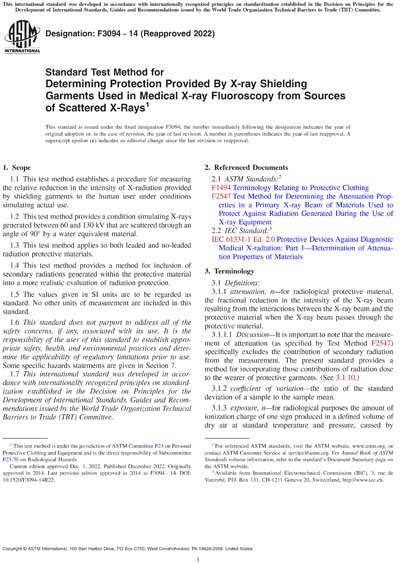Most recent
ASTM F3094-14(2022)
Standard Test Method for Determining Protection Provided By X-ray Shielding Garments Used in Medical X-ray Fluoroscopy from Sources of Scattered X-Rays
1.1This test method establishes a procedure for measuring the relative reduction in the intensity of X-radiation provided by shielding garments to the human user under conditions simulating actual use.
1.2This test method provides a condition simulating X-rays generated between 60 and 130 kV that are scattered through an angle of 90° by a water equivalent material.
1.3This test method applies to both leaded and no-leaded radiation protective materials.
1.4This test method provides a method for inclusion of secondary radiations generated within the protective material into a more realistic evaluation of radiation protection.
1.5The values given in SI units are to be regarded as standard. No other units of measurement are included in this standard.
1.6This standard does not purport to address all of the safety concerns, if any, associated with its use. It is the responsibility of the user of this standard to establish appropriate safety, health, and environmental practices and determine the applicability of regulatory limitations prior to use. Some specific hazards statements are given in Section 7.
1.7This international standard was developed in accordance with internationally recognized principles on standardization established in the Decision on Principles for the Development of International Standards, Guides and Recommendations issued by the World Trade Organization Technical Barriers to Trade (TBT) Committee.
ASTM International [astm]

